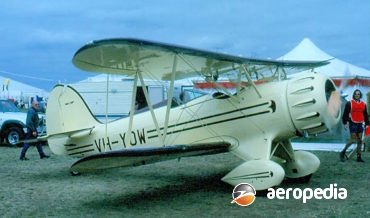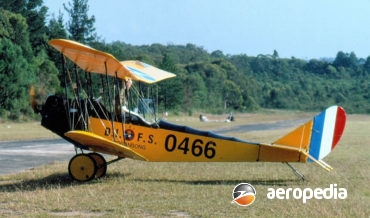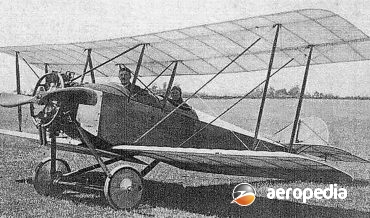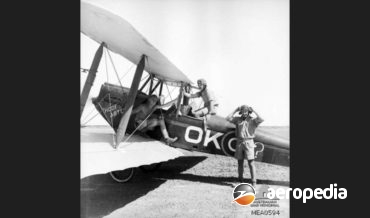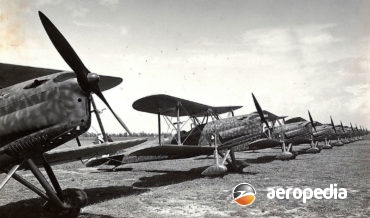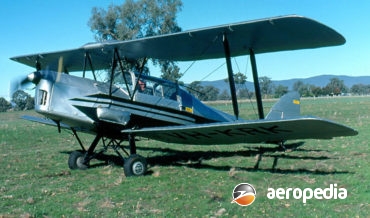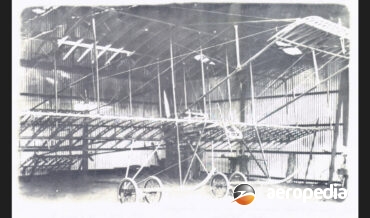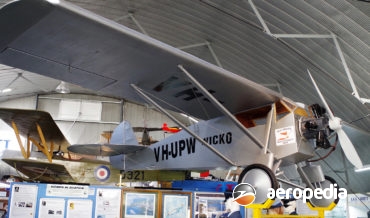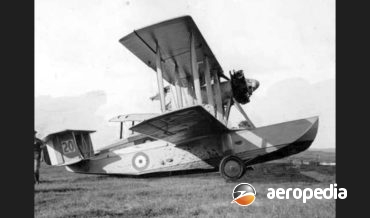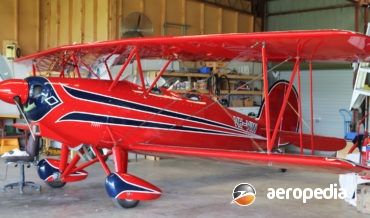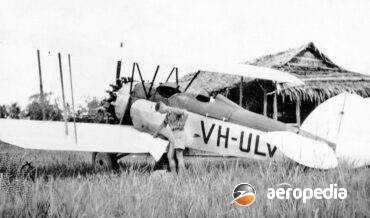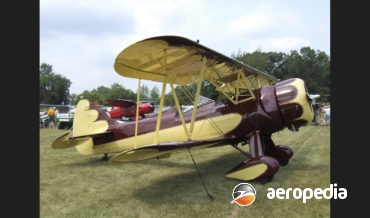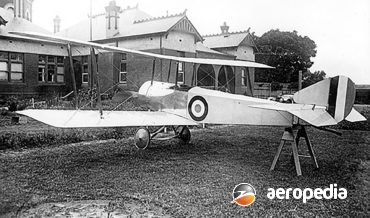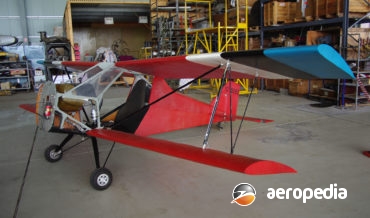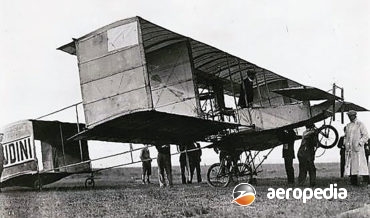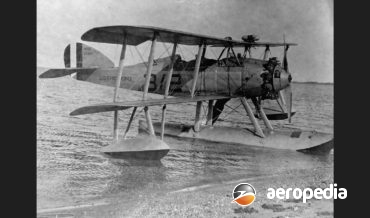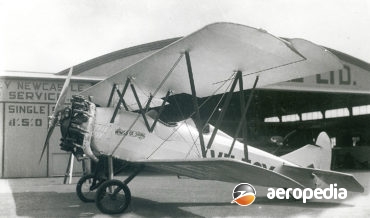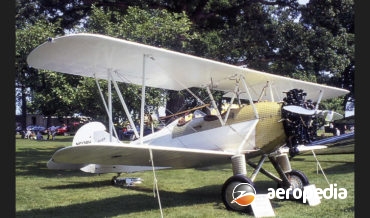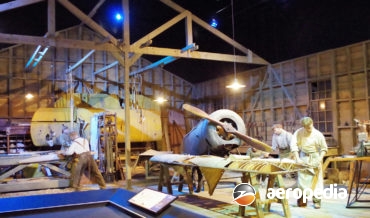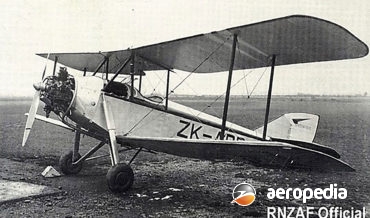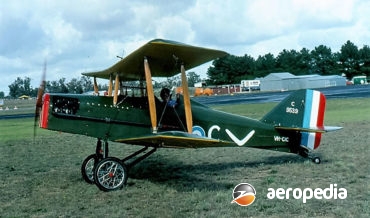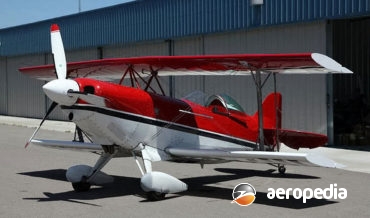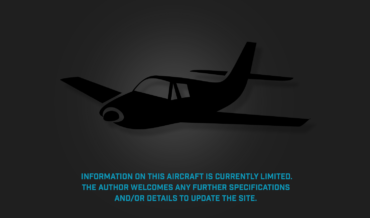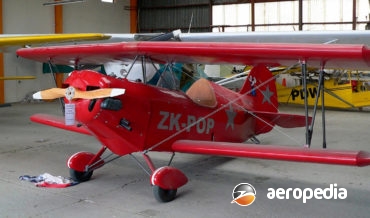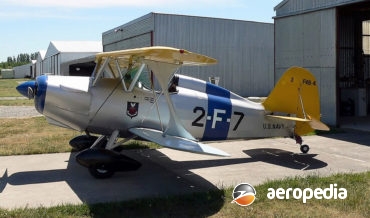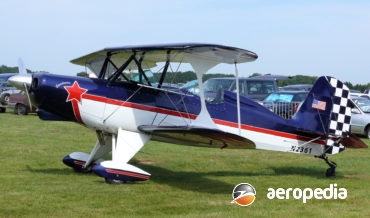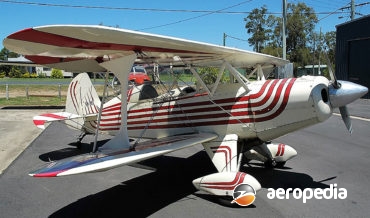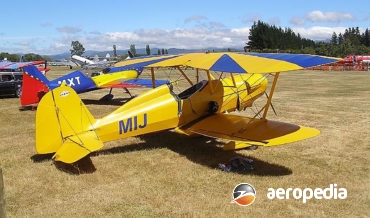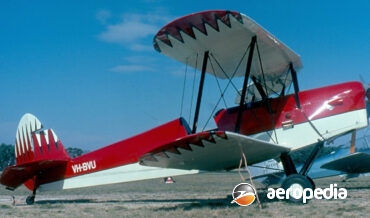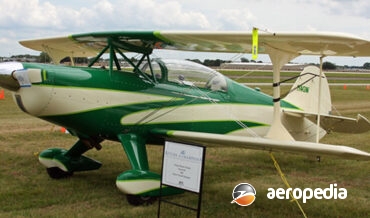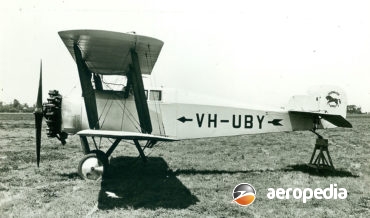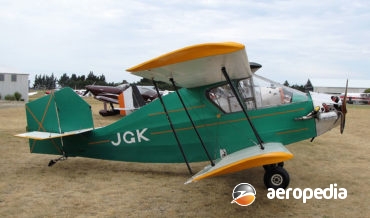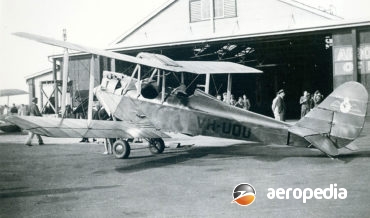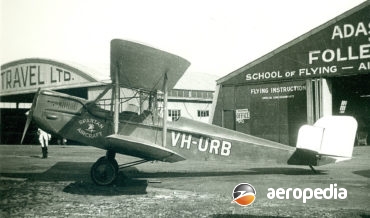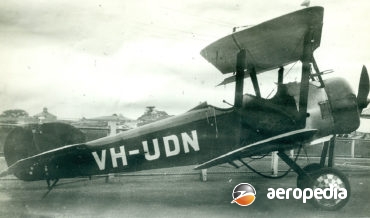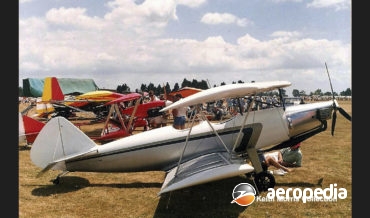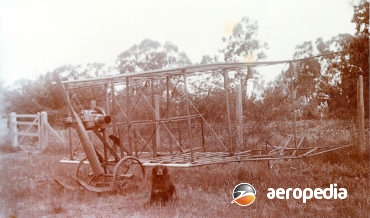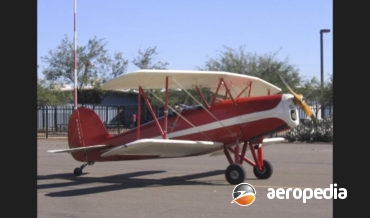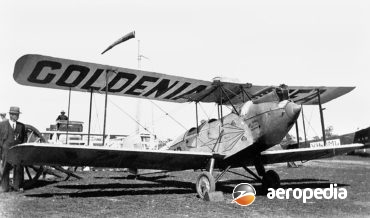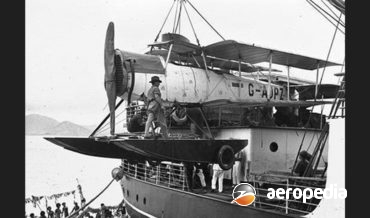All Contents
Contents
Due to the interest in 1930’s vintage aircraft, and the lack of an adequate supply of survivors, a replica of the 1930s era Waco YMF biplane has been developed and built by the Classic Aircraft Corp at Battle Creek, Lansing, Michigan.
David C. Eyre
- May 17, 2019
The Jenny is a two-thirds scale (67%) replica of the Curtiss JN4D Jenny of the 1920s and is a single-seat ultra light of biplane configuration. Although the design appears to have a second cockpit, this is non functional. The airframe is gusset riveted aluminium tubing with dacron covering.
David C. Eyre
- May 17, 2019
This was one of a number of light training aircraft and was described as a fully-aerobatic two-seat conventional tractor biplane built by the Canterbury (NZ) Aviation Company at Sockburn near Christchurch and in many ways was similar in appearance to the Sopwith Tabloid. It made its first flight
David C. Eyre
- May 17, 2019
The Ca 100 was produced in Milan, Italy from 1929 and was a licence-built variant of the DH-60 Moth.
David C. Eyre
- May 17, 2019
The Ca.164 was designed and developed as a training and touring biplane and was produced in Italy for the Italian Air Force and Italian aero clubs shortly prior to World War II.
David C. Eyre
- May 17, 2019
The Jackaroo was developed by the Wiltshire School of Flying Limited at Thruxton Aerodrome, Andover, Hants in the United Kingdom in the early 1960s.
David C. Eyre
- May 8, 2019
In 1916 Mr C W Wittber built a biplane which was similar in appearance to a Farman, known as the Wittber Biplane or Wittber Boxkite. The engine fitted, a three-cylinder Anzani, had previously been fitted to a Bleriot XI imported by Mr F J Jones of Adelaide.
David C. Eyre
- May 8, 2019
In 1929 Geoffrey Wikner purchased a second-hand but badly damaged Farman Sport biplane and rebuilt it, at that time registering a company as the Aircraft of Australia Aviation Co, and set about barnstorming in Queensland
David C. Eyre
- May 8, 2019
The Widgeon II was a re-design of the Widgeon I, being described as benefiting from the experience gained in the construction and operation of the earlier aeroplane.
David C. Eyre
- May 8, 2019
The 2-T-1 light sports trainer biplane was introduced to the aviation market in 1929 by the Great Lakes Aircraft Corp of Cleveland Ohio, the prototype flying during that year.
David C. Eyre
- May 8, 2019
The Waco 10 was launched in 1927 and certificated (ATC-13) in October that year. It was much improved on the Model 9, and was similar in layout and dimensions.
David C. Eyre
- May 8, 2019
In November 1935 the Waco YPF-6 was certificated (ATC-586) in the United States.
David C. Eyre
- May 8, 2019
Basil George Watson was born in Bendigo, VIC on 12 October 1894 and was the son of a mining investor.
David C. Eyre
- May 8, 2019
The WAACO Staggerbipe was first produced in the early 1980s by the West Australian Aircraft Company of Box Hill, VIC as a single-seat light sporting biplane and was made available in kit form for the amateur constructor.
David C. Eyre
- May 8, 2019
The brothers Charles (1882 - 1912) and Gabriel Voisin (1880 - 1973) in France in the 19th Century began building and experimenting with kites, incorporating modified Lawrence Hargrave type box-kite structures and in 1905, in association with Ernest Archdeacon and Louis Bleriot, built gliders.
David C. Eyre
- May 8, 2019
The Vought UO-1 was designed as a two-seat observation biplane for operation from ships of the United States Navy fleet and to be fitted with a single centre float and outrigger floats, to be catapulted off the ships and make unarmed reconnaissance, returning to the ship and landing on the
David C. Eyre
- May 8, 2019
The Travel Air 2000 was a three-seat biplane built as a cross-country type of ‘outstanding quality’ of rugged construction with a lively performance, and as an efficient work aircraft.
David C. Eyre
- May 8, 2019
Following the success of the Curtiss OX-5 powered Model 2000, Travel Air moved on to the Model 3000, a three-seat open cockpit variant powered by a 112-kw (150-hp) Hispano-Suiza Model A engine or the high-compression Model E which produced 134 kw (180 hp).
David C. Eyre
- May 8, 2019
For a period in the 1920s Thomas-Morse fighters were the main equipment of the front-line pursuit squadrons of the US Army and US Marine Corps and were produced in large numbers.
David C. Eyre
- May 8, 2019
The Redwing was designed by John Kenworthy as a light touring biplane, being built by Robinson Aircraft Co Ltd of Stafford Road, Wallington, Surrey, which later in 1931 became Redwing Aircraft Co Ltd.
David C. Eyre
- May 8, 2019
This aircraft, marketed by Replica Plans of Chilliwack, British Colombia, was designed as a scaled-down replica of the famous SE-5a fighter of World War I, incorporated modern techniques and a modern American engine to permit the aircraft to be built by amateur constructors.
David C. Eyre
- May 8, 2019
For some years the Canadian company, Raven Aircraft, specialised in building and supplying parts for Pitts S-1 and S-2 aerobatic aircraft.
David C. Eyre
- May 8, 2019
The Flying Fox, as it was known, was designed by Captain R W Reid, MC, who had served with the Australian Flying Corps during World War I.
David C. Eyre
- May 8, 2019
The Special biplane was designed and made available to the amateur builder by RagWing Aircraft Designers of Belton, South Carolina, and is a low powered aircraft similar in configuration to the Pitts S-1 designed to create a relatively fast machine for cross-country flying but very small and powered by relatively
David C. Eyre
- May 8, 2019
The Stolp SA-100 Starduster was designed by Louis Stolp in the United States as a single-seat light sporting biplane and was aimed at the popular sport aviation market in America at that time.
David C. Eyre
- May 8, 2019
The Starduster Too was designed by Louis Stolp and George Adamas for cross-country flying with an open cockpit and has been marketed by the Stolp Starduster Corp of Oroville, California, as a open sports plane for the amateur constructor.
David C. Eyre
- May 8, 2019
The Acroduster Too is one of a series of light sporting aircraft produced by Stolp Starduster Corp of Oroville, California and is a fully aerobatic two-seat aircraft stressed to +9 and -9 G.
David C. Eyre
- May 8, 2019
In 1957 Louis Stolp and George Adams designed and built a light single-seat sporting biplane known as the Starduster, and subsequently marketed plans, components and basic materials to amateur constructors.
David C. Eyre
- May 8, 2019
The Stampe series of tandem two-seat primary training biplanes was designed by Count Stampe in Belgium, and manufactured by the Stampe-et-Vertongen concern in Belgium.
David C. Eyre
- May 8, 2019
The Starfire Firebolt, a two-seat high-performance aerobatic biplane, also known as the Starfire Firebolt Convertible [convertible because the cockpit canopy can be quickly removed] and the MacKenzie Skybolt, was designed by G H McKenzie and was produced by Starfire Aviation of Tempe, Arizona and was produced in small numbers, nine
David C. Eyre
- May 8, 2019
The Gnu was introduced in 1919 by the Sopwith Aviation Co of Canbury Park Road, Kingston-on-Thames, as a three-seat touring biplane or taxi aircraft with an enclosed cabin for the two passengers, although the enclosed cabin was found to be very cramped and was not popular and most were operated
David C. Eyre
- May 8, 2019
Sorrell Aviation in the United States produced a series of ultralight aircraft, including the Guppy and the Hiperlight.
David C. Eyre
- May 8, 2019
The British light aircraft manufacturing company, Simmonds Aircraft Ltd, underwent some changes in 1930 and became Spartan Aircraft Ltd and produced aircraft initially at its Weston, Southampton facility, before moving to East Cowes on the Isle of Wight on 20 February 1931.
David C. Eyre
- May 8, 2019
Produced as a successor to the Simmonds Spartan, between 1930 and 1935 Spartan Aircraft Ltd constructed a total of twenty-six examples of its Three-Seater, the first two being completed at Southampton, and the remainder at the company’s new facility at East Cowes on the Isle of Wight.
David C. Eyre
- May 8, 2019
In 1919 Sopwith Aviation and Engineering Co Ltd produced the Dove, this being a two/three-seat variant of the Sopwith Pup fighter of World War I converted for use as a private touring and training aircraft.
David C. Eyre
- May 8, 2019
The Mynah 2 was a one-off homebuilt light biplane aircraft and although designed by Wallace and Robert McNair, it had no resemblance or linkage with the McNair Mynah, which is dealt with elsewhere.
David C. Eyre
- May 8, 2019
William Douglas Sloane (known as Douglas) was born on 4 June 1890 at Mulwala Station north of Yarrawonga, VIC.
David C. Eyre
- May 8, 2019
The DSA-1 Miniplane (DSA - Darned Small Airplane) was designed, and the prototype built, by Frank W Smith as a small open cockpit biplane of relative simple construction, to be constructed by amateur builders, and to be capable of some aerobatics.
David C. Eyre
- May 8, 2019
In 1928 Mr O E Simmonds decided to design and manufacture a series of light biplanes for sale to the public, with the main design aim being to make as many parts interchangeable as possible to save costs.
David C. Eyre
- May 8, 2019
Sometimes known as the Short Sporting Type, the Short Shrimp was a three-seat commercial biplane fitted with floats and designed and built at the company’s Rochester facility in 1919.
David C. Eyre
- May 8, 2019
Recent Comments
Archives
Categories
- No categories
Categories
- No categories
Latest Posts
Newsletter

